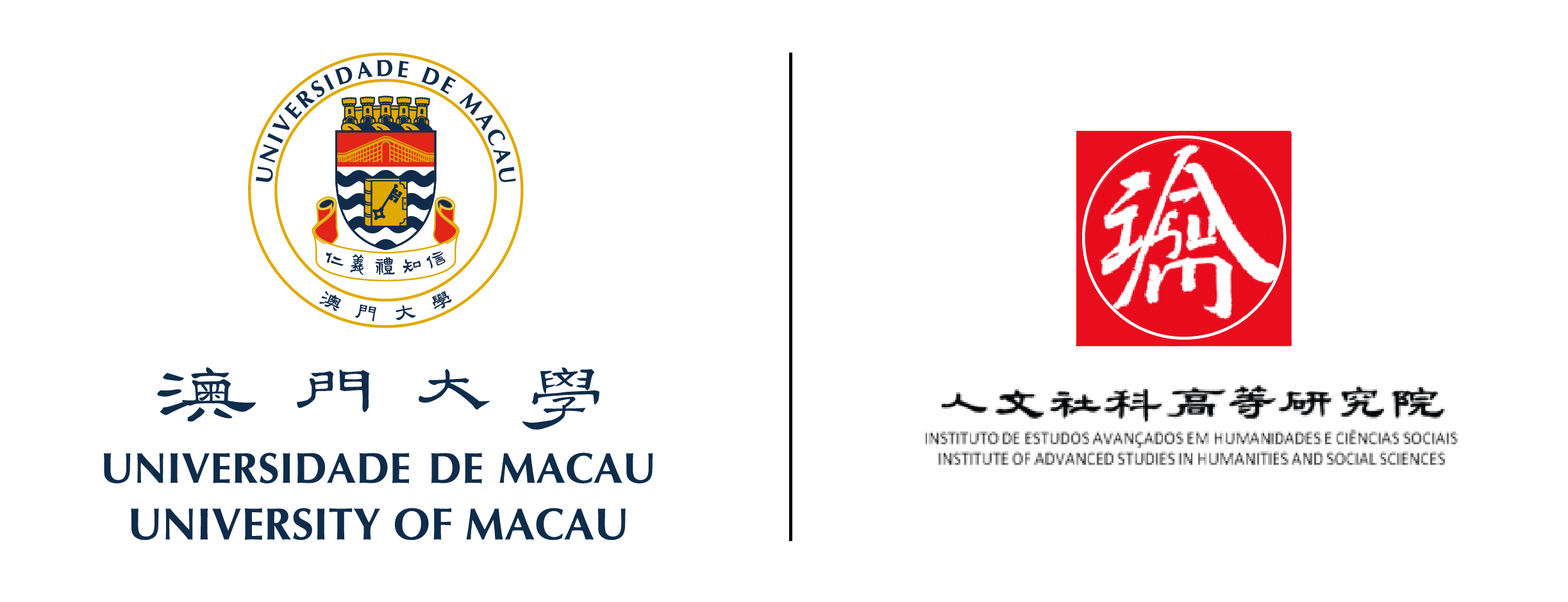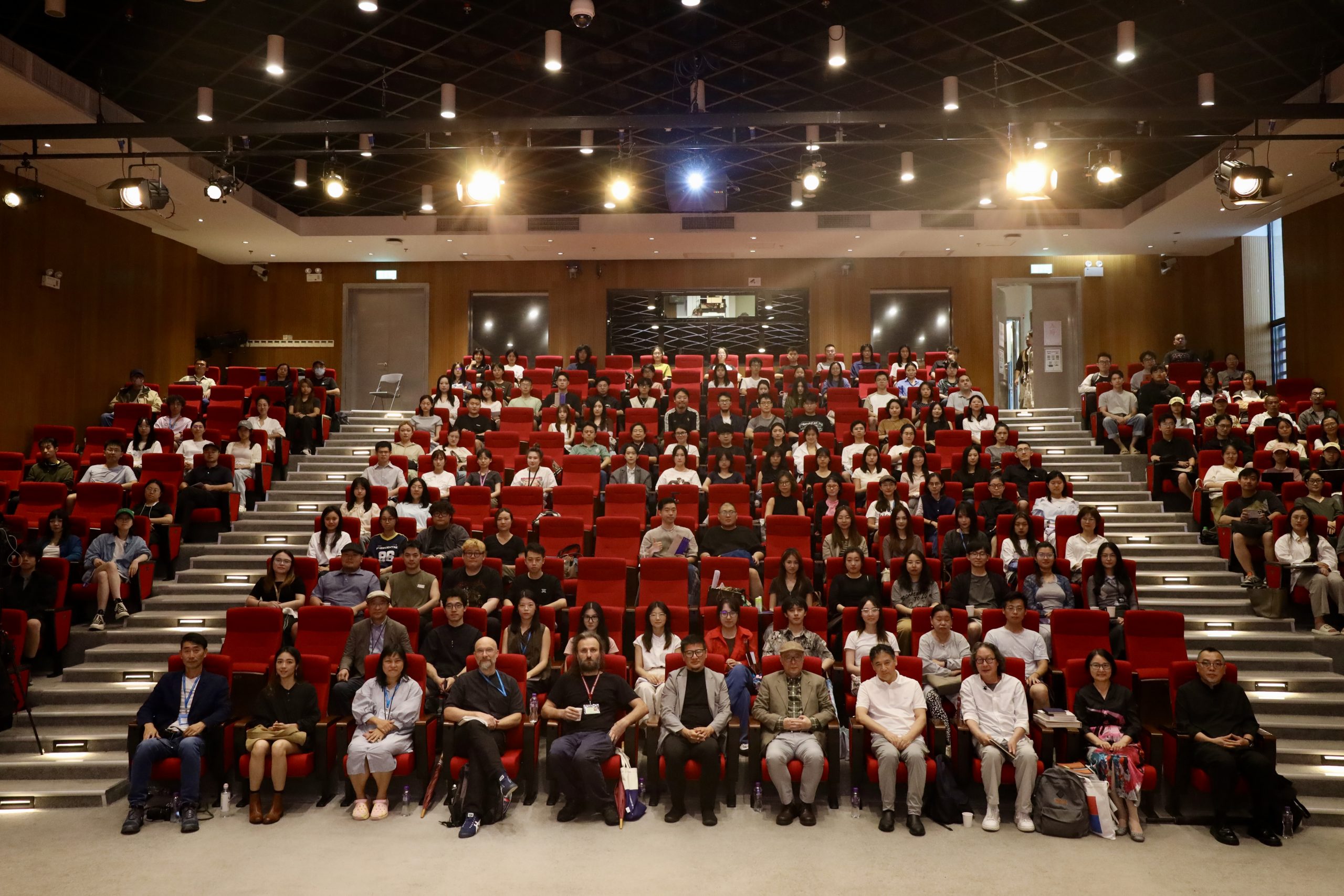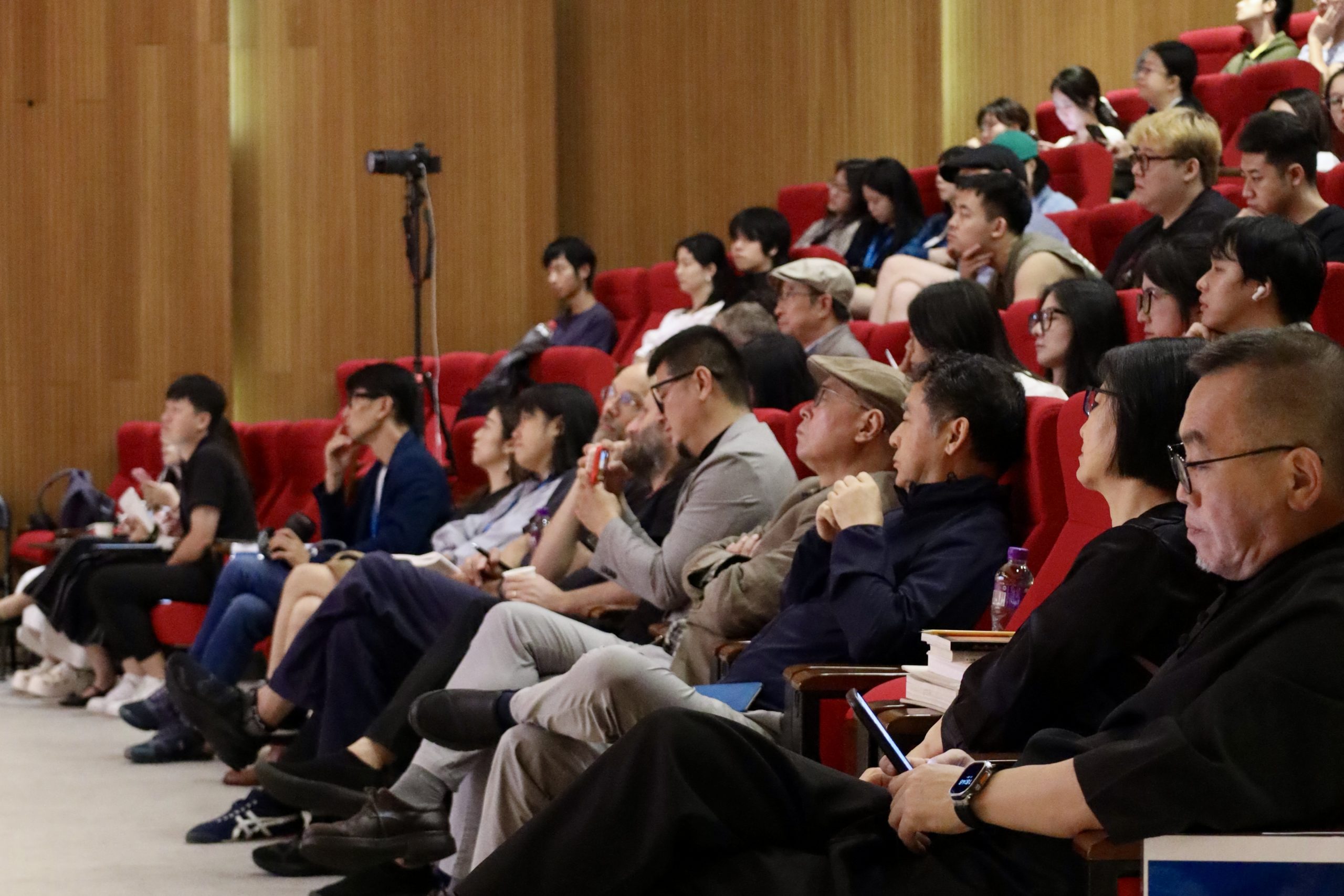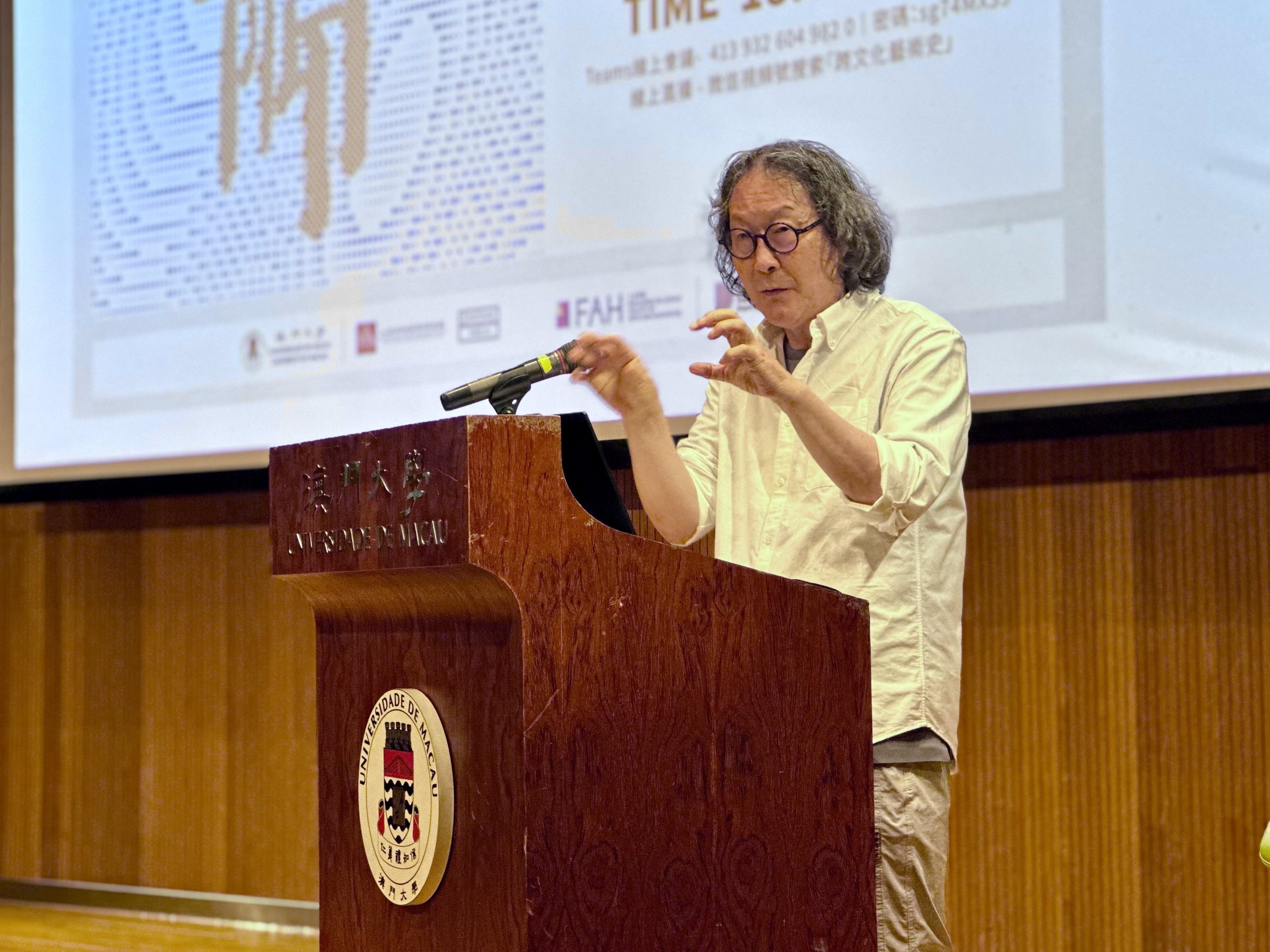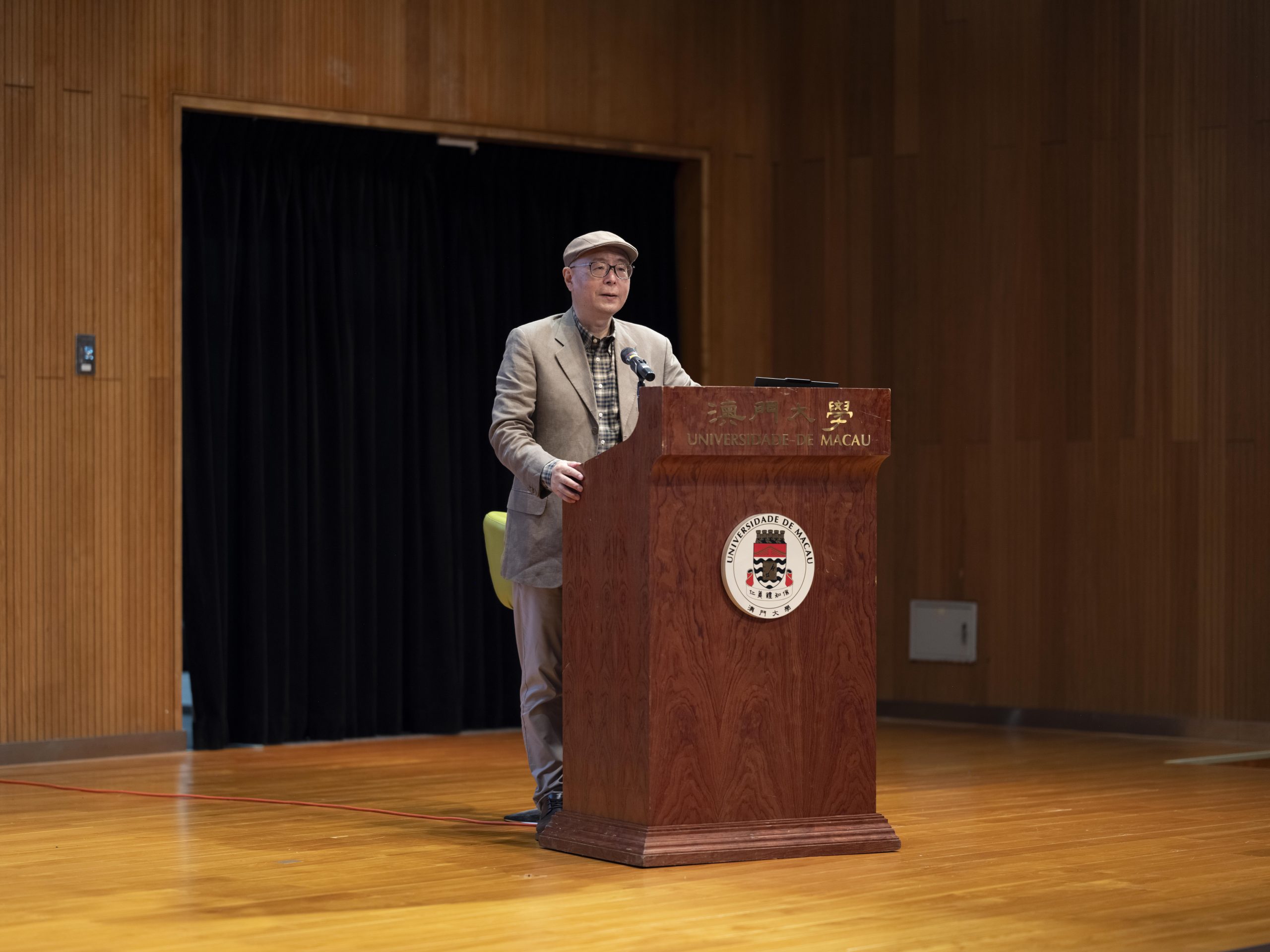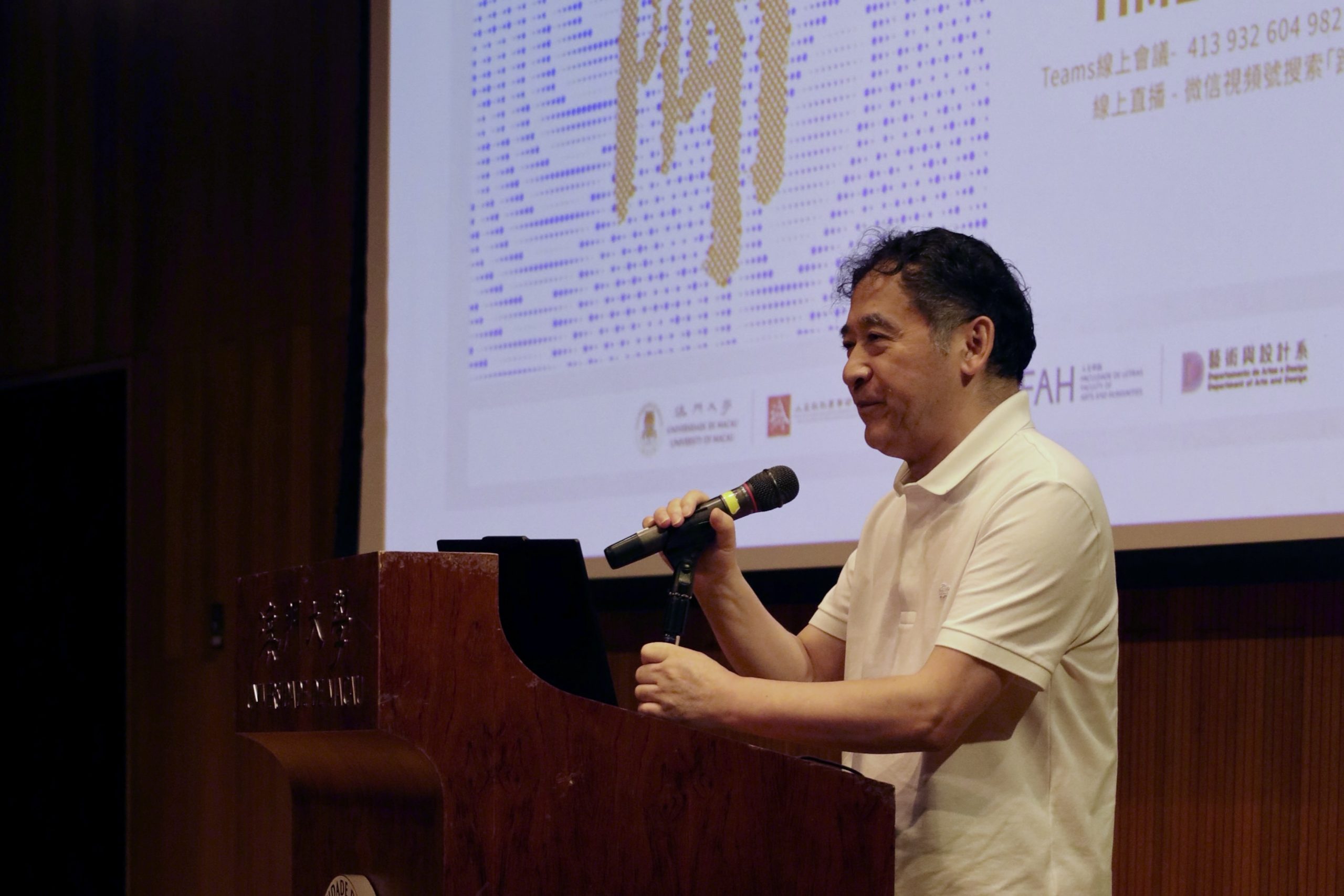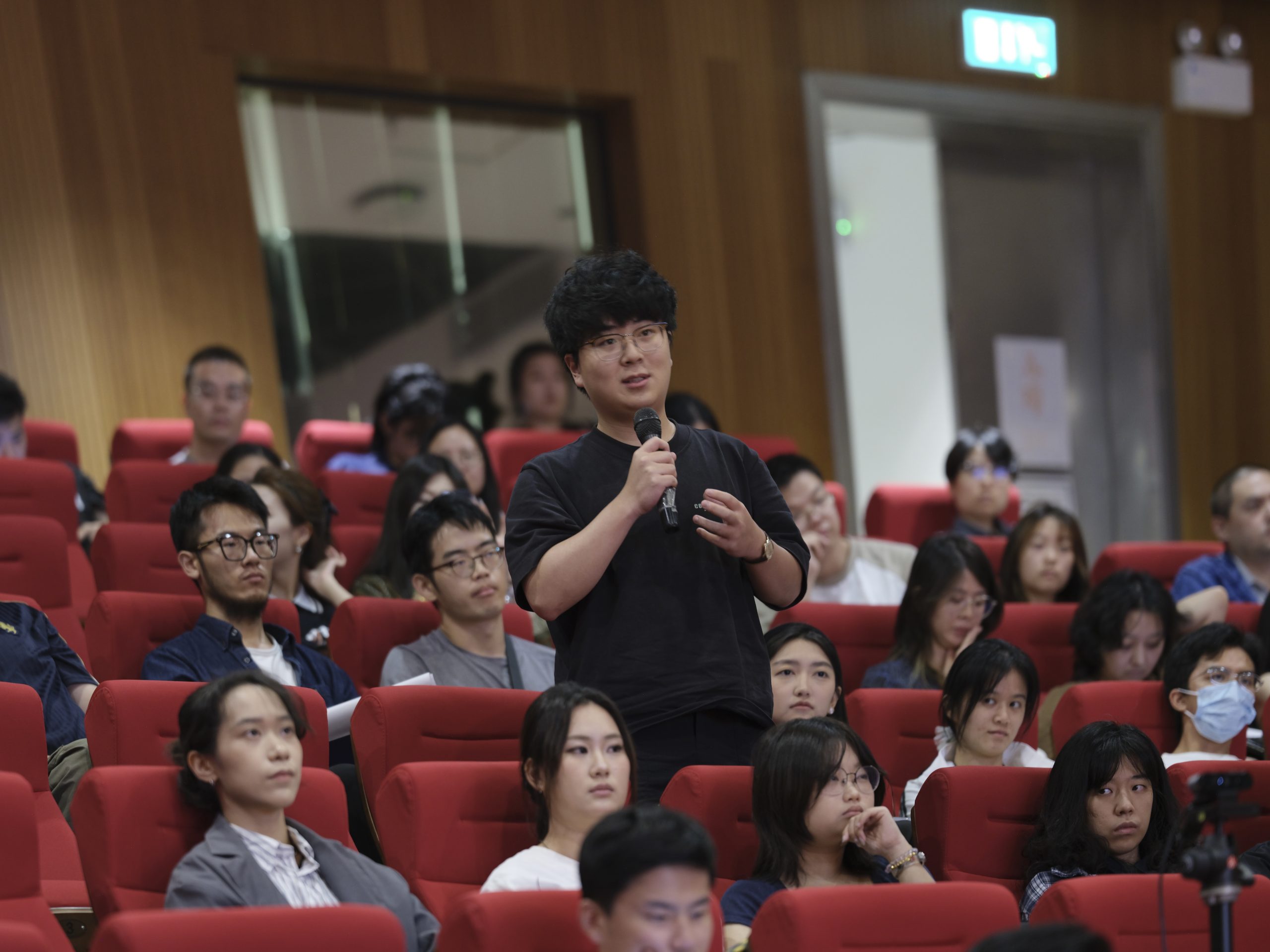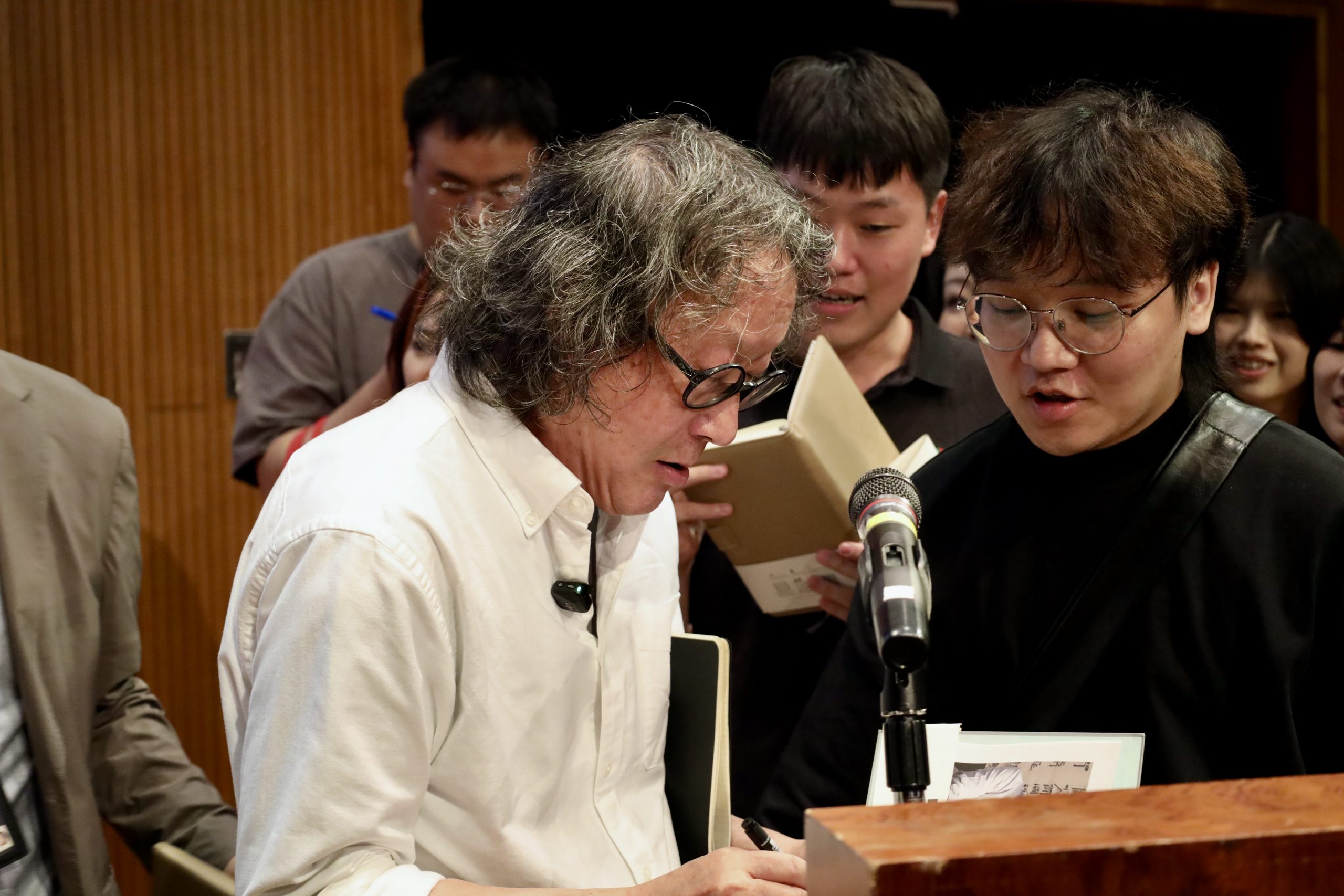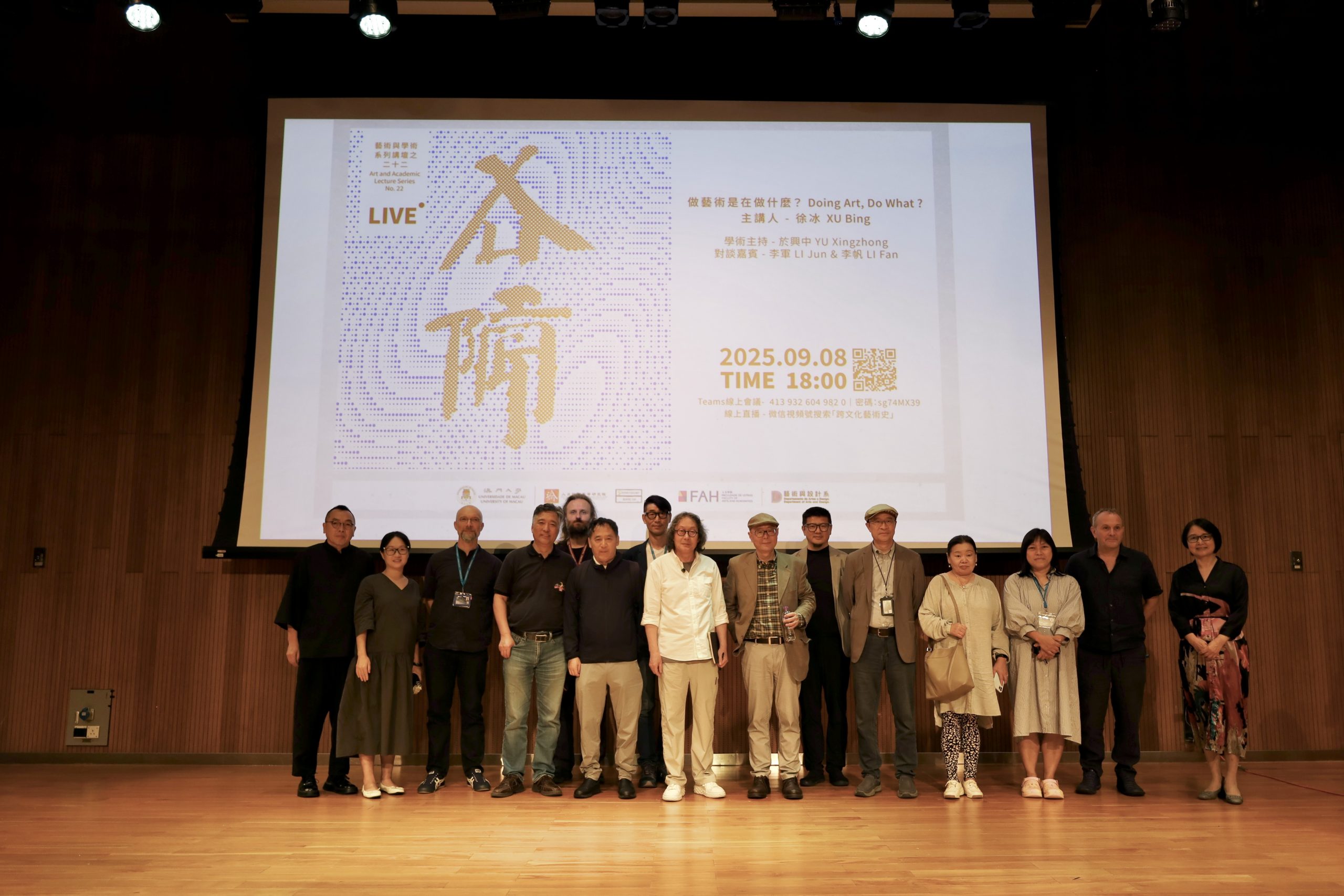
On September 8, 2025, the Institute of Advanced Studies in Humanities and Social Sciences (IAS) of the University of Macau, in collaboration with the Department of Arts and Design (DAD) of the Faculty of Arts and Humanities (FAH), successfully co-organized the 22nd session of the Arts and Academic Lecture Series, themed “Doing Art, Doing What?”. The keynote speaker was Professor Xu Bing, a renowned artist and Professor at the Central Academy of Fine Arts. Using his representative works as examples, Professor Xu explored the essence and function of art, as well as its relationship to civilization and society. The lecture was moderated by Professor Yu Xingzhong, Director of IAS and Chair Professor of the Faculty of Law. The event began with opening remarks delivered by Professor Li Jun, Chair Professor and Head of DAD at FAH, who warmly welcomed the guests and audience and briefly introduced the lecture theme.
Professor Xu Bing then officially began his keynote lecture. He addressed the fundamental question of “What is art?” and elaborated on its essence and functions. He emphasized that art is not merely a reflection of reality but also a continuous process of self-reflection and exploration of the world. For humanity, artistic creation represents an unceasing pursuit of the unknown and a process of transcending boundaries. In this process, art constantly breaks through traditional limitations and challenges established cognitive frameworks. Professor Xu stressed that in the context of contemporary art, the boundaries of art are no longer fixed but rather evolve, adapt, and transform with environmental and historical changes. This dynamic quality, he argued, is the fundamental driving force behind art’s ongoing vitality and transformation.
When presenting his own works, Professor Xu introduced several significant projects, including Gravitational Arena, Book from the Sky, Phoenix, and Dragonfly Eyes, and elaborated on the design concepts behind them. Through these works, he extended the discussion to the relationship between art and civilization, covering a wide range of issues from the representation of ancient civilizations to contemporary topics such as environmental sustainability and artificial intelligence. He emphasized that these works are not only profound reflections on human culture but also critical considerations of social development and future directions, demonstrating how art, in times of change, continuously advances the exploration and expression of human existence and social concerns.
During the subsequent Q&A session, participants actively posed questions and engaged in lively discussions on the multidimensionality of artistic creation and its role in contemporary society.
The lecture attracted nearly 300 participants on site and close to 4,500 viewers online. It enabled attendees to gain a deeper understanding of the role of art in the transmission of civilization and social transformation, while also guiding them to reflect on the contemporary value and future directions of art. At the same time, the lecture fostered exchanges on contemporary art theory and practice, built a cross-disciplinary dialogue platform between academia and the arts, and further stimulated participants to reflect on research methods and practical approaches in art.

